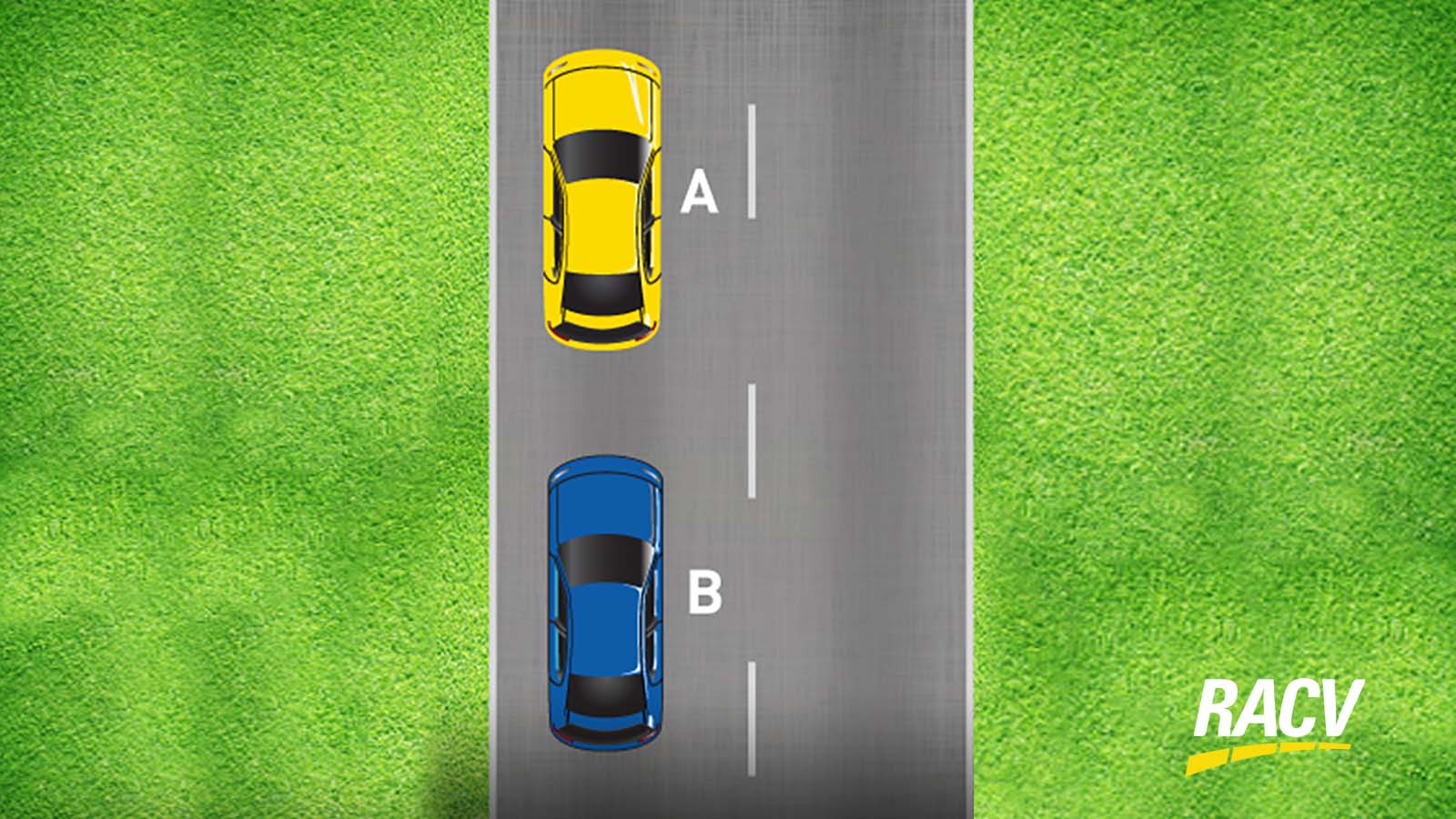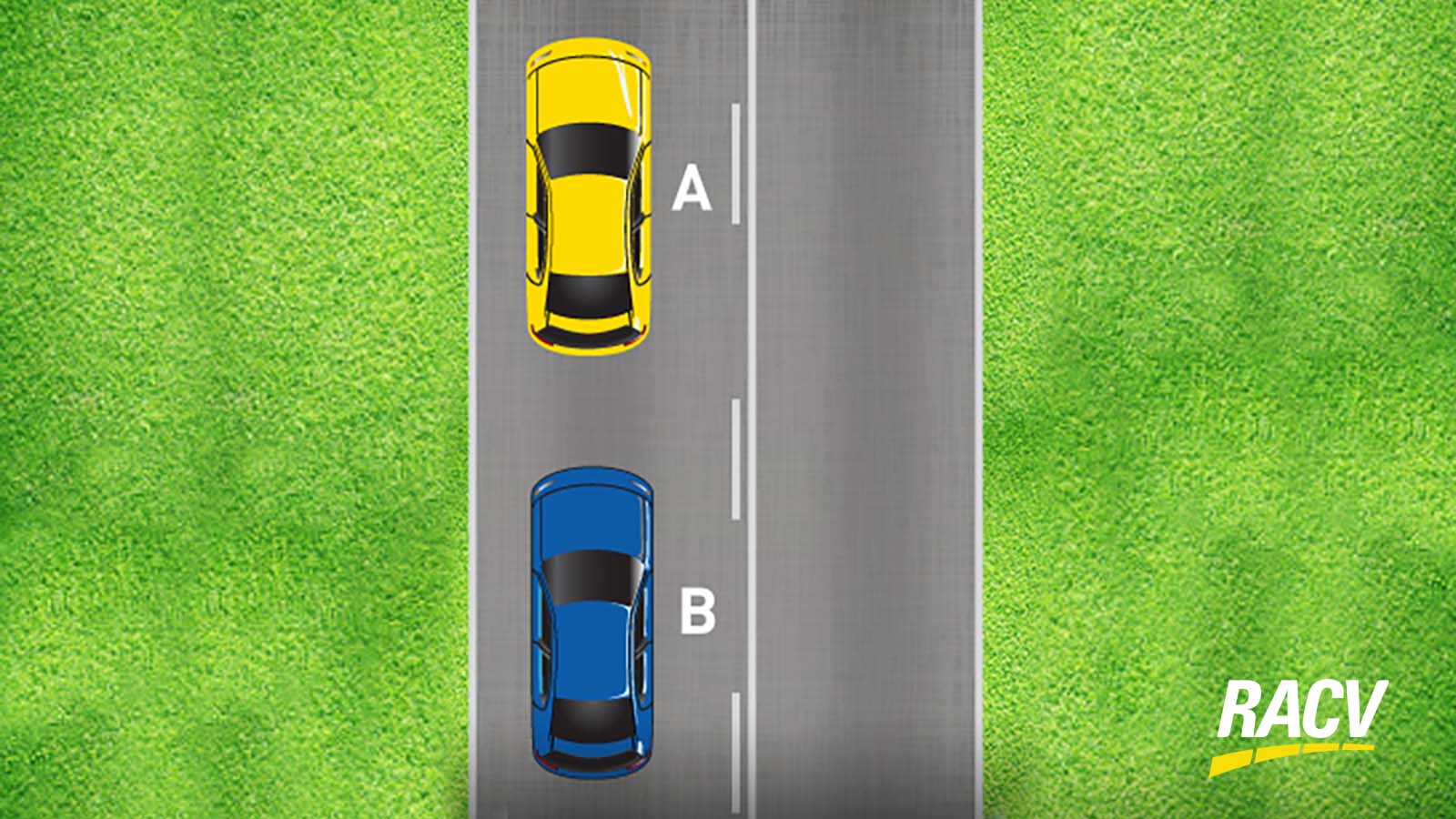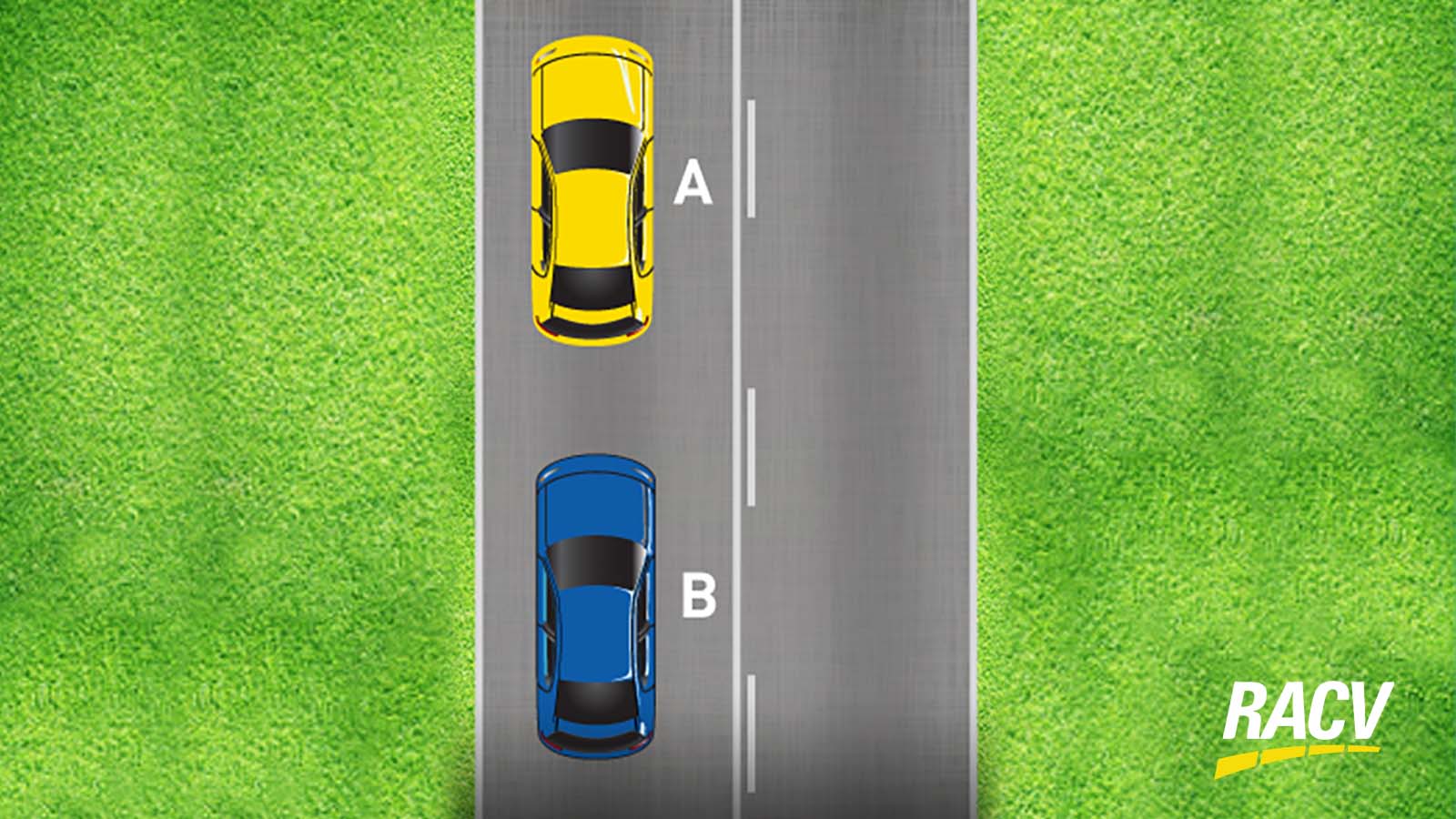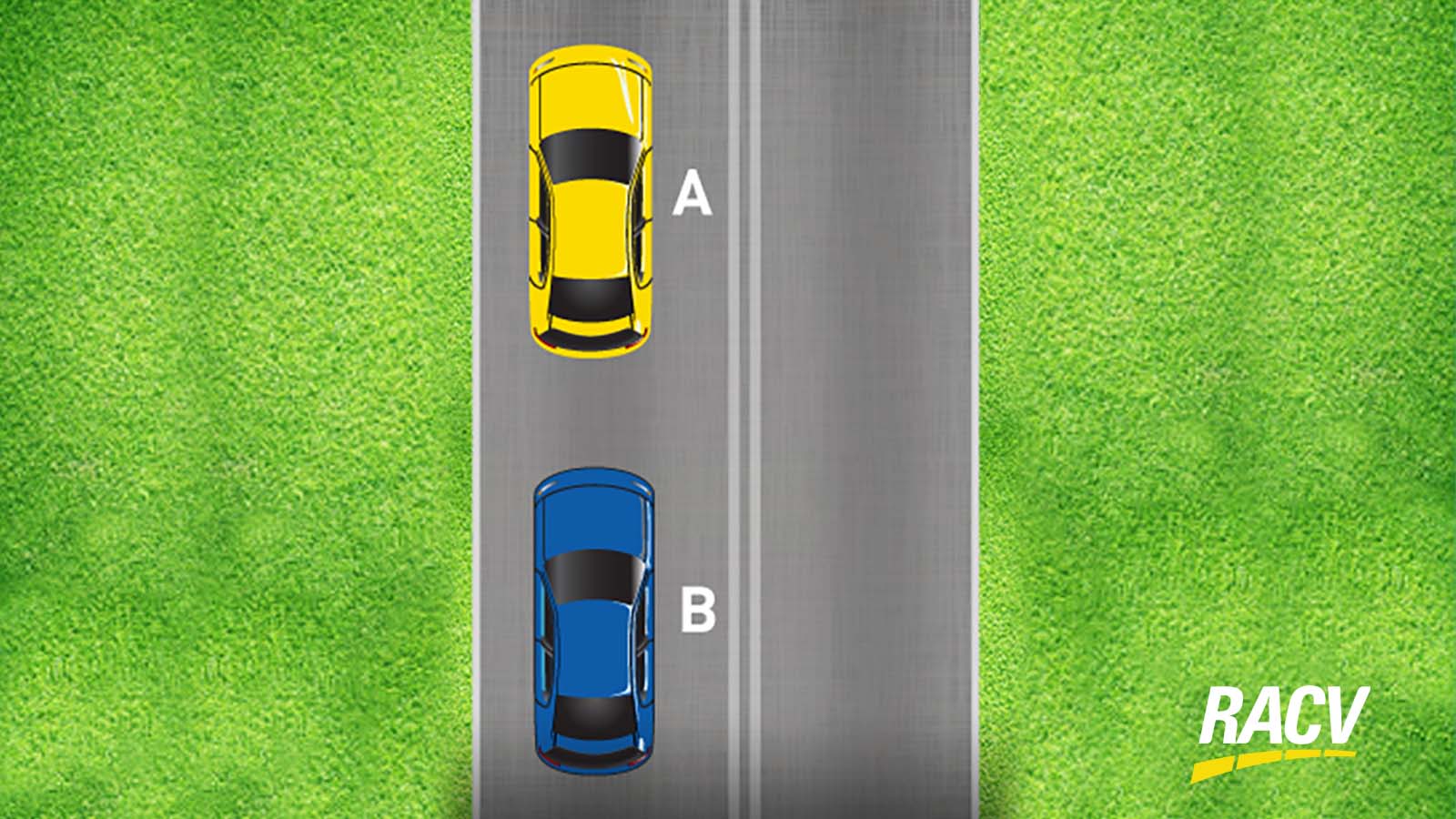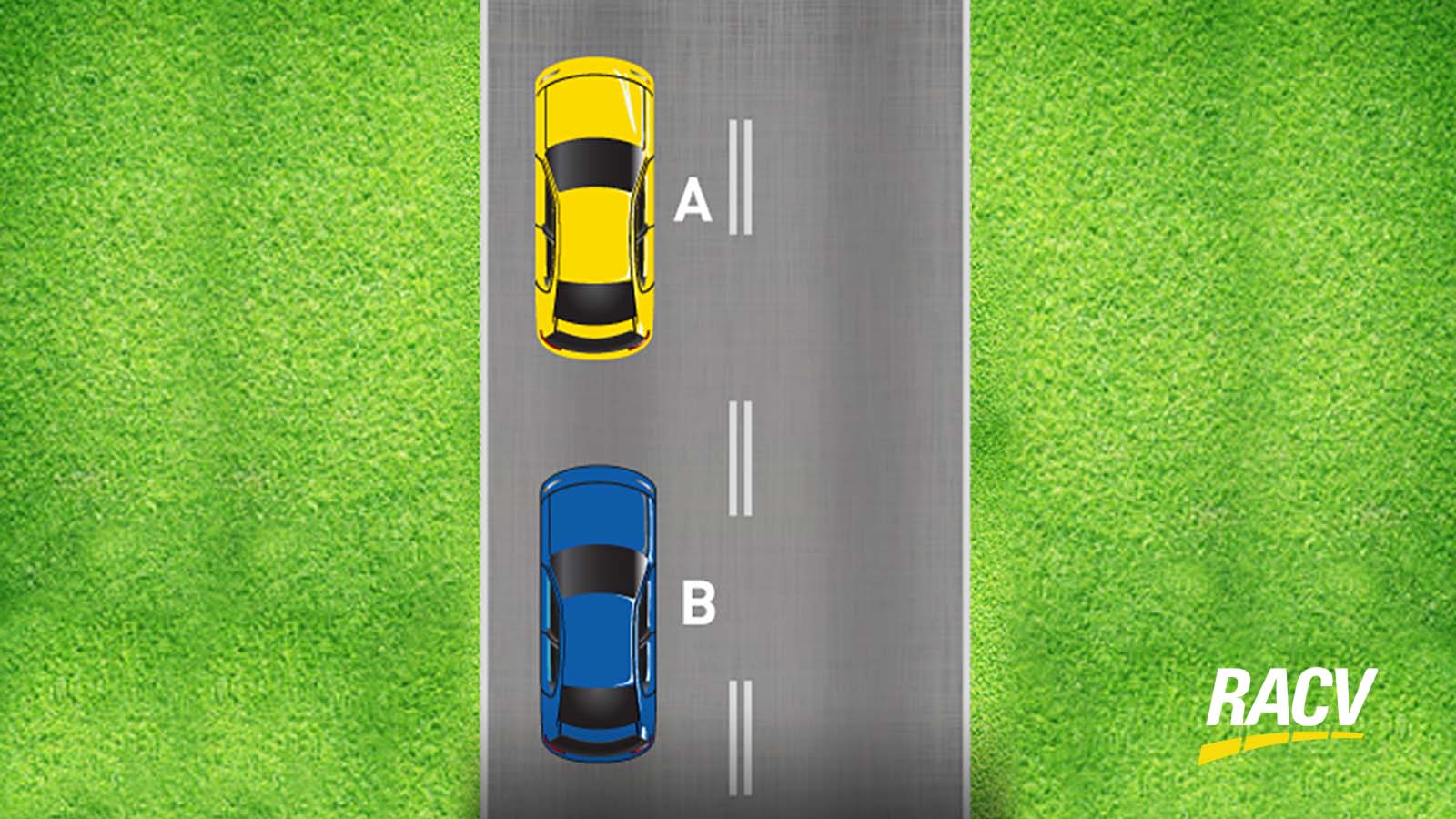Line marking help us understand what we can and can’t do in certain areas. Here we go through the main ones to be aware of on the road.
Information about line markings
Line markings in Victoria
Drivers must keep to the left of dividing lines painted in the centre of the road, whether they are dashed or solid lines.
Here’s a general summary of when you can cross the different types of lines:
|
Broken dividing lines |
Yes |
Yes |
Yes |
Yes |
|---|---|---|---|---|
|
Continuous dividing lines |
Yes |
No |
No |
Yes |
|
Broken dividing line to left of continuous line |
Yes |
Yes |
Yes |
Yes |
|
Broken dividing line to right of continuous line |
Yes |
No |
No |
Yes |
|
Double continuous dividing lines |
No |
No |
No |
No |
|
Double broken dividing lines |
Yes |
Yes |
Yes |
Yes |
*Unless otherwise prohibited
**Angle parking on the opposite side of the road provided the driver doesn’t need to make a U-Turn
For more information see rules 132, 134 and 139 of the Victorian Road Safety Road Rules 2017.
Dividing lines
You must always obey traffic lane arrows and turn according to the arrows whether they’re at signalised intersections, roundabouts or elsewhere.
The only exception is making U-turns from lanes marked with right turn arrows (unless a sign says otherwise).
See rule 92 of the Victorian Road Safety Road Rules 2017.
You can’t change lanes over a single continuous lane line, including those approaching traffic signals.
Continuous lines along a lane are to prevent drivers from changing lanes. The Rules do outline exceptions, which include such situations as:
- Avoiding an obstruction.
- Obeying a traffic control device.
- There is a special purpose lane (bus, bicycle lane etc) you’re permitted to drive in and you’re moving to or from this lane (including part-time lanes).
- The driver is permitted to drive in both lanes because of another rule (for example a turning truck allowed to use both lanes).
For more information see rules 147 and 148 of the Victorian Road Safety Road Rules 2017.
At some locations such as on freeways, long lines with short gaps are used. These markings are to discourage unnecessary lane changes. Due to the repeated nature of the lines and breaks they’re considered to be broken lines.
You must not drive over a painted island surrounded by a single continuous line unless:
- Entering or leaving the road or part of a road.
- Entering a turning lane that begins immediately after the painted island.
- Accessing angle parking on the opposite side of the road.
You must not drive over a painted island at a freeway on-ramp or slip lane.
For more information see rule 138 of the Victorian Road Safety Road Rules 2017.

Drivers must not stop in areas with these markings.
See rule 96 of the Victorian Road Safety Road Rules 2017.
A no U-turn signs means you may turn right, if possible, at that location, but must not make a U-turn.
A no right-turn sign means you must not turn right or make a U-turn at that location.
The summaries RACV provide on Victorian road rules are based on the Victorian Road Safety Road Rules 2017. We make sure to reference the exact rule where possible. When reading, keep in mind that we’re providing general information, not legal advice. If you’re looking for specific questions on any legal matter, consult with a lawyer for help.

